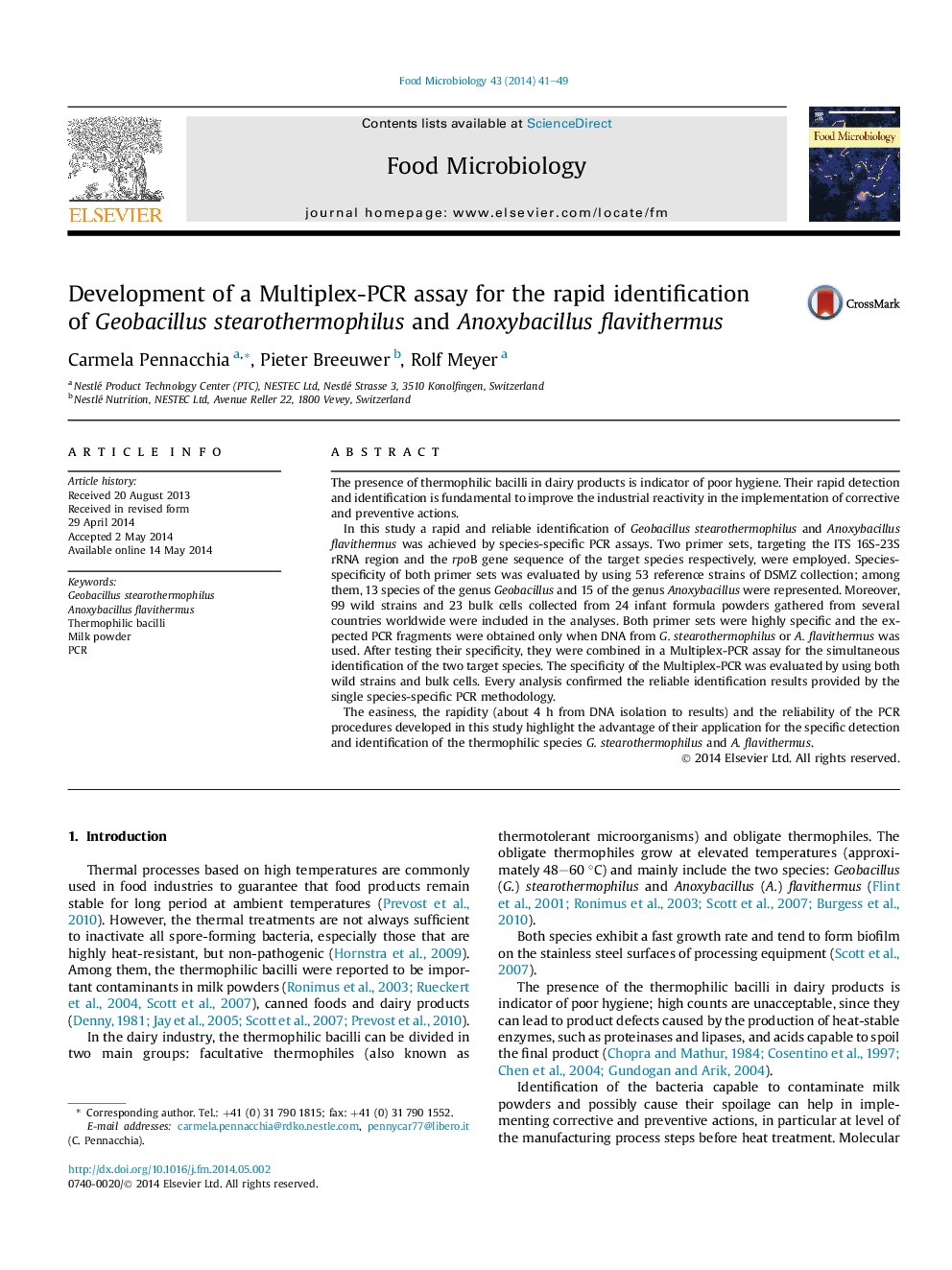| Article ID | Journal | Published Year | Pages | File Type |
|---|---|---|---|---|
| 4362867 | Food Microbiology | 2014 | 9 Pages |
•Geobacillus stearothermophilus and Anoxybacillus flavithermus identifications were achieved by PCR assays.•Primers targeting ITS 16S-23S rRNA region and rpoB gene sequence were employed.•After testing their specificity, they were combined in a Multiplex-PCR assay.•The simultaneous detection of the two target species was successfully achieved.•Rapidity (∼4 h from DNA isolation to results) of the assays emphasizes their advantage.
The presence of thermophilic bacilli in dairy products is indicator of poor hygiene. Their rapid detection and identification is fundamental to improve the industrial reactivity in the implementation of corrective and preventive actions.In this study a rapid and reliable identification of Geobacillus stearothermophilus and Anoxybacillus flavithermus was achieved by species-specific PCR assays. Two primer sets, targeting the ITS 16S-23S rRNA region and the rpoB gene sequence of the target species respectively, were employed. Species-specificity of both primer sets was evaluated by using 53 reference strains of DSMZ collection; among them, 13 species of the genus Geobacillus and 15 of the genus Anoxybacillus were represented. Moreover, 99 wild strains and 23 bulk cells collected from 24 infant formula powders gathered from several countries worldwide were included in the analyses. Both primer sets were highly specific and the expected PCR fragments were obtained only when DNA from G. stearothermophilus or A. flavithermus was used. After testing their specificity, they were combined in a Multiplex-PCR assay for the simultaneous identification of the two target species. The specificity of the Multiplex-PCR was evaluated by using both wild strains and bulk cells. Every analysis confirmed the reliable identification results provided by the single species-specific PCR methodology.The easiness, the rapidity (about 4 h from DNA isolation to results) and the reliability of the PCR procedures developed in this study highlight the advantage of their application for the specific detection and identification of the thermophilic species G. stearothermophilus and A. flavithermus.
